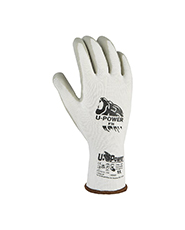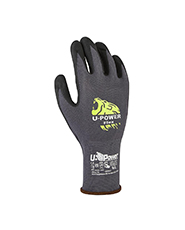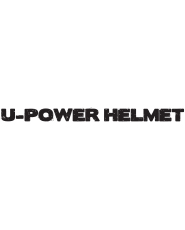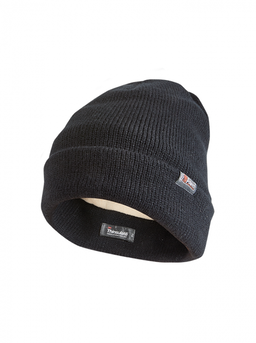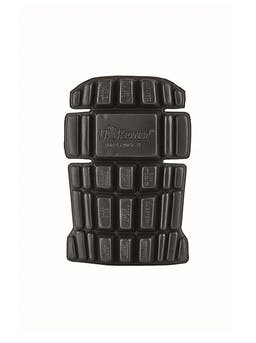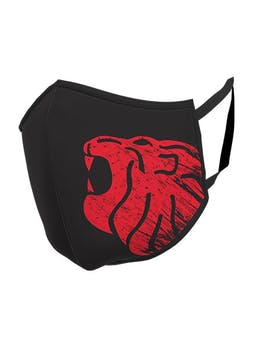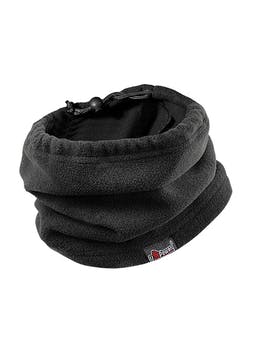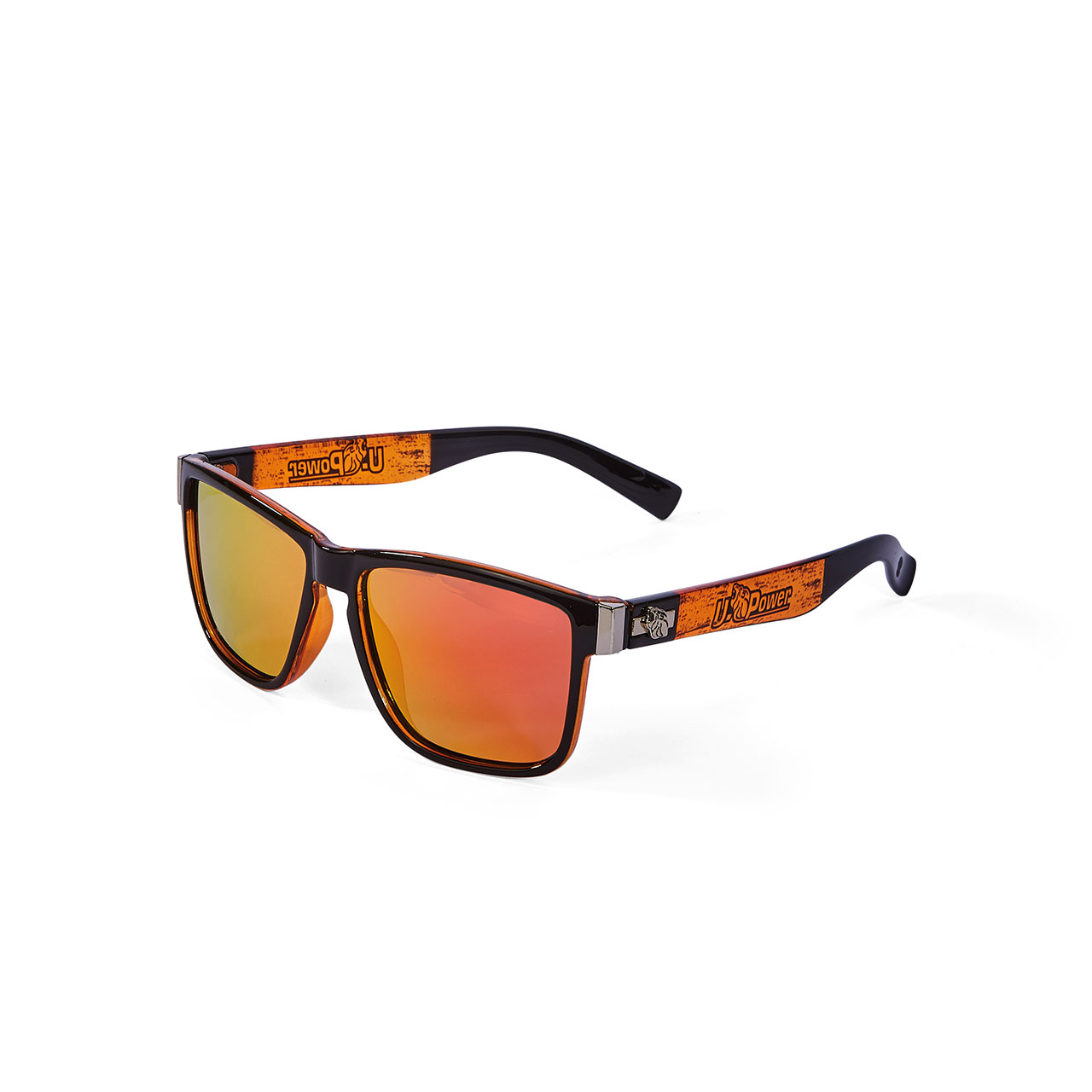INSTRUCTIONS FOR USE
European Regulation (EU) 2016/425 regulates the CE marking of all personal protective equipment (PPE). The declaration of conformity is the document produced by the manufacturer in which it declares that the product complies with the health and safety requirements of the regulation. The presence of the CE marking is compulsory on all garments considered to be PPE and marketed in countries belonging to the European Economic Area (EEA) and EFTA countries.
Regulation (EU) 2016/425 identifies and classifies the three risk categories of PPE.:
The general requirements for PPE are governed by standard UNI EN ISO 13688, which specifies the following general performance requirements:
STANDARDS WITH SPECIFIC REQUIREMENTS
UNI EN ISO 20471 - HIGH-VISIBILITY CLOTHING
The standard specifies the requirements for high-visibility clothing that visually signals the wearer's presence both in daylight and in artificial lighting conditions at night. Visibility is ensured by the combination of a fluorescent base fabric during the day and a retro-reflective fabric in the dark, making it possible to classify garments into three categories of protection.
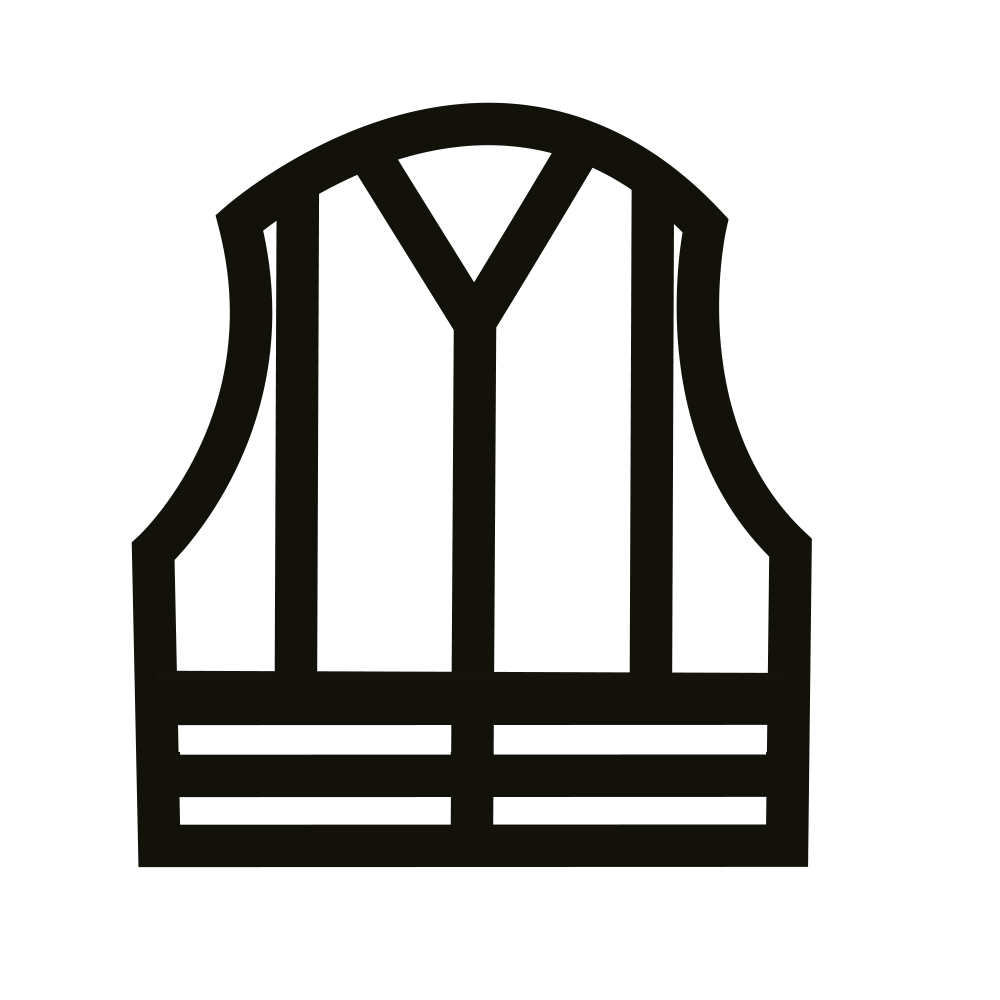 |  |  | |||
| class 3 | class 2 | class 1 | |||
| BACKGROUND MATERIAL (fluorescent) | 0,80 | 0,50 | 0,14 | ||
| RETROREFLECTIVE MATERIAL | 0,20 | 0,13 | 0,10 | ||
Class 3: represents the highest level of protection and is suitable for people working in airports or intermodal ports, motorway maintenance or roads with several lanes in each direction. It must have a minimum of 0.80 m² of fluorescent backing material and 0.20 m² of retroreflective tape, which corresponds to 5 metres of 4 cm high tape.
Class 2:: represents the intermediate level of protection and is suitable for those working in municipal and national road maintenance, warehousemen and drivers. It must include a minimum of 0.50 square metres of fluorescent background material and 0.13 square metres of retroreflective tape, which corresponds to 3.25 metres of 4 cm high tape.
Class 1:: represents the minimum level of protection and is recommended for those who maintain private roads, or in situations of limited risk. It must include a minimum of 0.14 square metres of fluorescent background material and 0.10 square metres of retroreflective tape, which corresponds to 2.50 metres of 4 cm high tape.
UNI EN 17353 – HIGH-VISIBILITY CLOTHING FOR MEDIUM-RISK SITUATIONS
The standard specifies the requirements for clothing worn in medium-risk situations that require increased visibility, but where the risk assessment does not make the use of PPE certified to EN ISO 20471 mandatory:
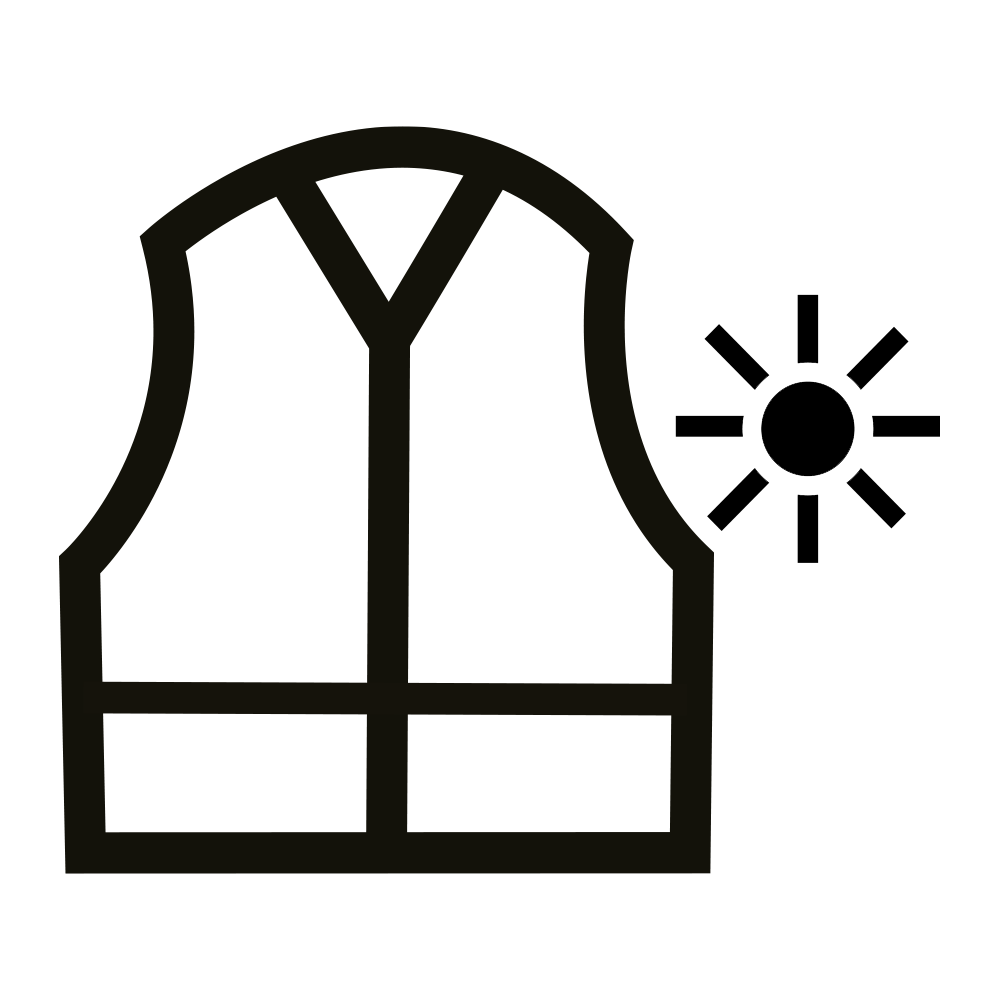
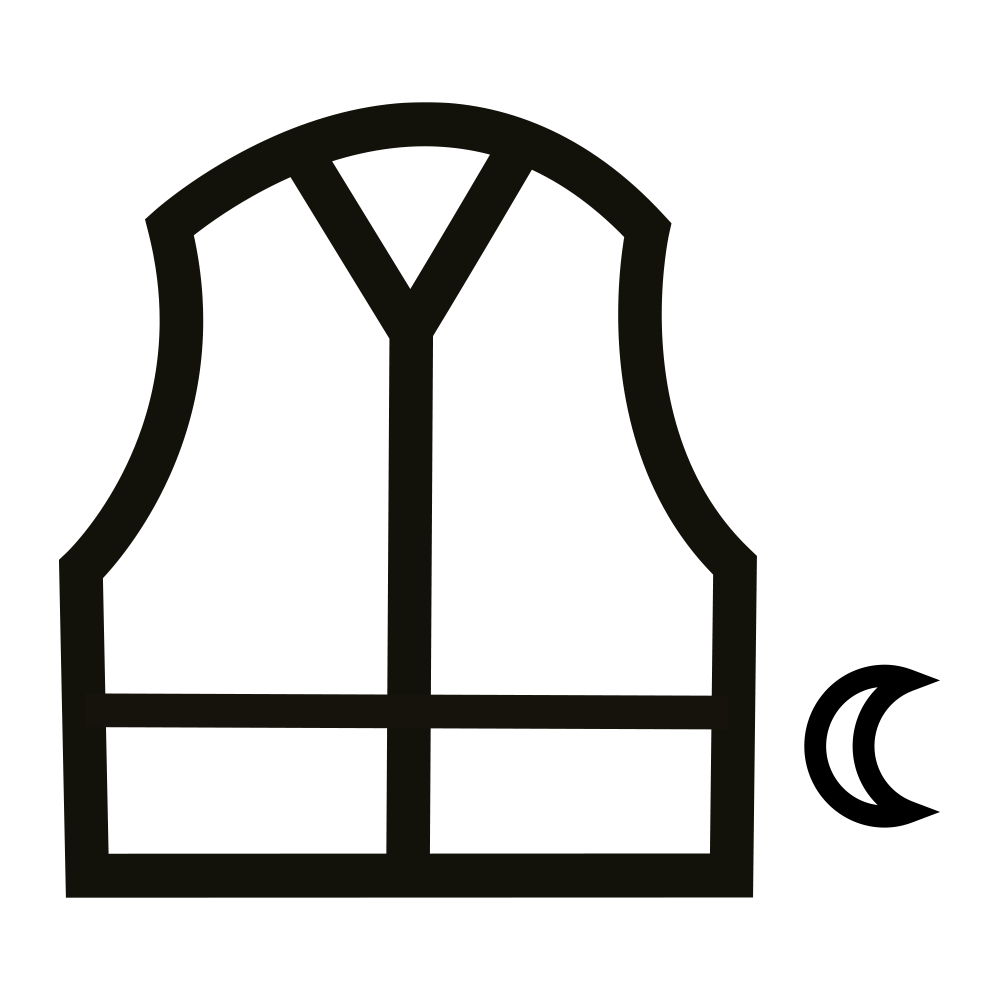

UNI EN 343 – RAIN PROTECTION CLOTHING
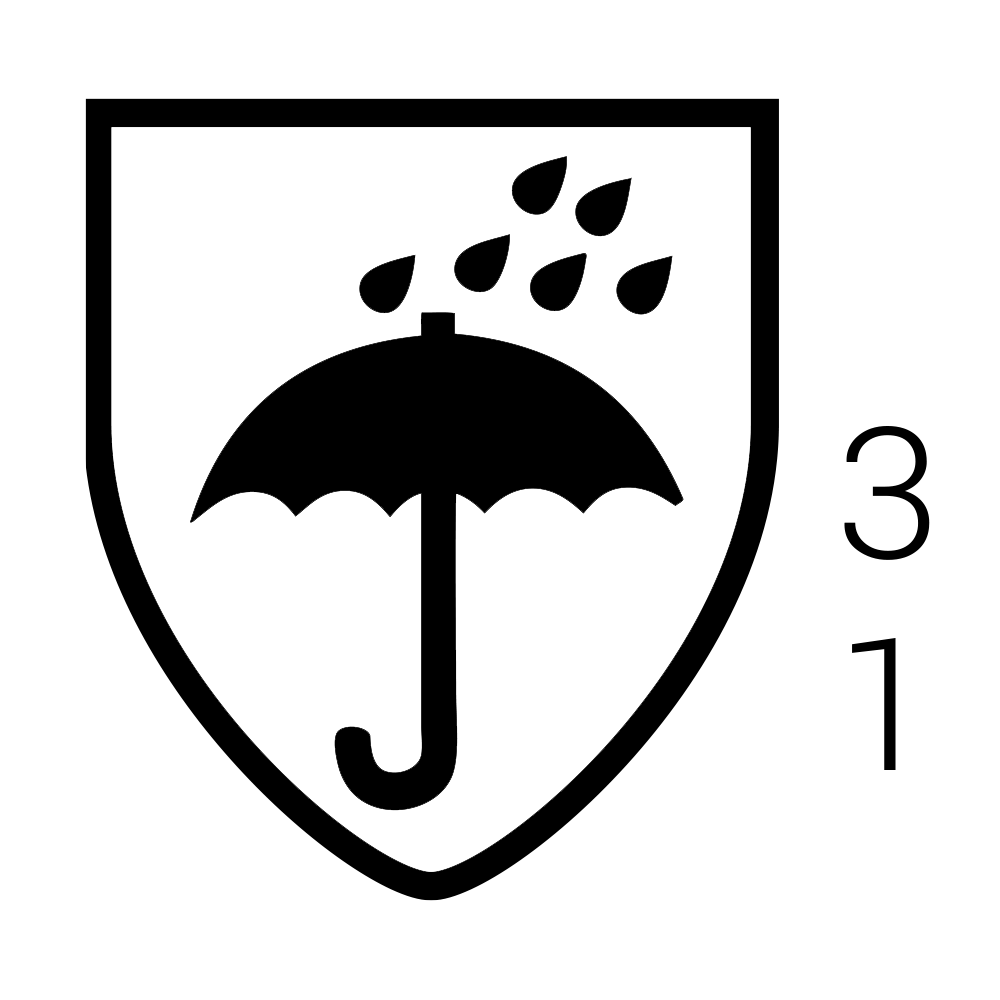 The standard specifies the requirements applied to clothing materials and seams for protection against atmospheric factors such as rain, snow, fog and soil moisture. The garments are designed and manufactured using waterproof and breathable materials, paying particular attention to the waterproofing of all seams to ensure a high level of comfort.
The standard specifies the requirements applied to clothing materials and seams for protection against atmospheric factors such as rain, snow, fog and soil moisture. The garments are designed and manufactured using waterproof and breathable materials, paying particular attention to the waterproofing of all seams to ensure a high level of comfort. | | Resistance to water penetration (WP) | ||||
|---|---|---|---|---|---|
class 1 | Wp ≥ 8.000 Pa | ||||
class 2 | Wp ≥ 8.000 Pa | ||||
class 3 | Wp ≥ 13.000 Pa | ||||
class 4 | Wp ≥ 20.000 Pa | ||||
| | Water vapour resistance (Ret) | ||||
|---|---|---|---|---|---|
class 1 | Ret > 40 | ||||
class 2 | 25 < Ret ≤ 40 | ||||
class 3 | 15 < Ret ≤ 25 | ||||
class 4 | Ret ≤ 15 | ||||
UNI EN 342 – SUITS AND CLOTHING TO PROTECT AGAINST THE COLD
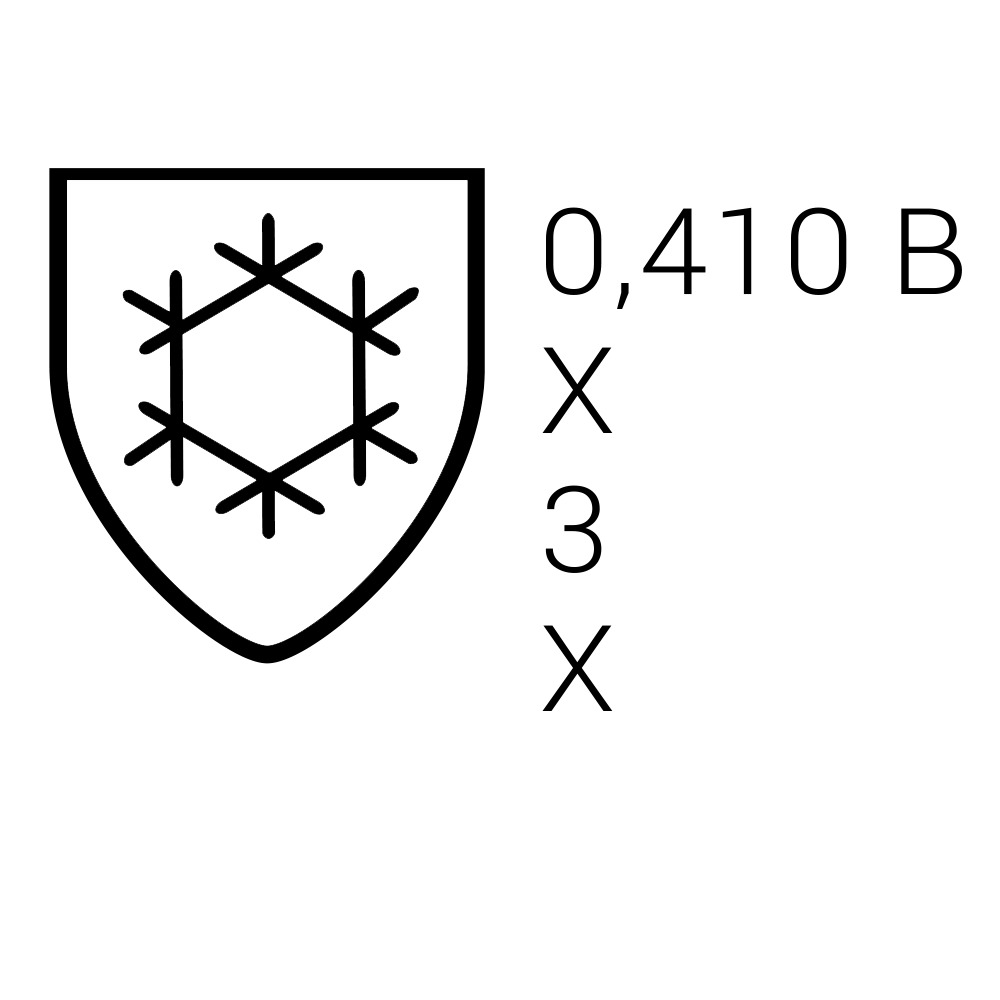 The standard specifies the requirements and test methods for garments (coveralls or overalls) and personal clothing designed to protect the body against cold environments below - 5°C. The standard does not include specific requirements for headgear, gloves and footwear.
The standard specifies the requirements and test methods for garments (coveralls or overalls) and personal clothing designed to protect the body against cold environments below - 5°C. The standard does not include specific requirements for headgear, gloves and footwear. |
0,410 B
| Thermal insulation value. | ||||
X | Thermal insulation value. | ||||
3 | Air permeability class. | ||||
X | Water penetration resistance class. | ||||
* | X indicates that the garment has not been tested. | ||||
| | Thermal insulation * Test carried out with underwear: TYPE B for use with coveralls/suits TYPE C supplied by the manufacturer TYPE R for use with single garments | ||||
| | Air permeability AP | class 1 | 100<AP | ||
| class 2 | 5<AP≤100 | ||||
| class 3 | AP≤5 | ||||
| | WP water penetration resistance (optional) | ||||
UNI EN 14058 – PROTECTIVE CLOTHING FOR COLD ENVIRONMENTS
 The standard specifies the requirements and test methods for the performance of individual items of clothing for protection against the cooling of the body in cold environments down to temperatures of - 5°C. Compared with EN 342, EN 14058 is less restrictive.
The standard specifies the requirements and test methods for the performance of individual items of clothing for protection against the cooling of the body in cold environments down to temperatures of - 5°C. Compared with EN 342, EN 14058 is less restrictive. Y | Thermal resistance class | ||||
Y | Air permeability class. | ||||
Y | Thermal insulation value. | ||||
WP | Water penetration resistance class. | ||||
* | Y and/or WP will become X if the article is not tested | ||||
 | Classification of thermal resistance Rct | class 1 | Rct m2 · K/W | ||
| class 2 | 0,06 ≤ Rct < 0,12 | ||||
| class 3 | 0,12 ≤ Rct < 0,18 | ||||
 | Air permeability AP | class 1 | 0,18 ≤ Rct < 0,25 | ||
| class 2 | 0,25 ≤ Rct | ||||
| class 3 | 0,25 ≤ Rct | ||||
 | Thermal insulation (optional) * is carried out when the thermal resistance requirements of class 4 are met. | ||||
 | WP water penetration resistance (optional) | ||||
WARNINGS
Operating limits – the PPE does not protect from:
any risk that the device has not been certified.
Marking:
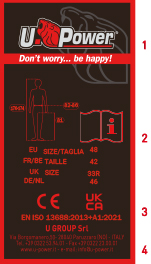
The label bearing the CE marking can be fixed inside the garment. The characters and pictograms indicate the garment's storage instructions. The font sizes are larger than 2 mm and the dimensions of the written EC are greater than 5 mm. The specific size of the garment will be placed on a separate label (size label).
- Brand of manufacture;
- Pictogram and tables measures, indicating the standard to which the directive is compliant;
- CE marking and the category of PPE;
- name and address of the manufacturer.
REACH
In order to safeguard the health of consumers, the European Parliament has issued the "REACH" Regulation (an acronym for "Registration, Evaluation, Authorisation and restriction of CHemicals"), which has the following objectives:
- to improve knowledge of hazards and risks from chemicals in order to ensure a high level of protection of human health and the environment; di protezione della salute umana e dell’ambiente;
- to promote the development of alternative methods to those requiring the use of vertebrate animals for the evaluation of the hazards of substances;
- to maintain and to reinforce the competitiveness and innovative capacities of the EU chemical industry.
U-POWER guarantees compliance with the REACH Regulations for all garments in the collection; they do not contain prohibited or limited substances and to guarantee this, rigorous controls are carried out on all the materials used during production.
EN ISO 13688:2013
Protective clothing - General requirements
This regulation focuses on the general requirements for all protective clothing requiring CE marking in Europe and should be considered together with the specific standard for the article concerned.
The standard "specifies the general performance requirements for ergonomics, safety, size designation, ageing, compatibility and marking of protective clothing and the information to be provided by the manufacturer with protective clothing".
Ergonomics
Incorporating the correct design, sufficient comfort for the wearer (taking into account the safety properties of the garment), the dimensional change from repeated cleaning and the methods used such as dry cleaning, washing etc.
Safety
In this case, the legislation serves to ensure that the clothing does not adversely affect the health of the wearer.
Designation of dimensions
An important requirement for the garment is undoubtedly to be marked with the correct size according to the standard body dimensions, so that we can guarantee everyone the possibility of wearing it.
Ageing
Describes the behaviour and the change of ownership of one or more components of the garment over time to the detriment of the clothing, ensuring good resistance and preservation of the fabric.
Compatibility and marking
Ensure that the clothing is marked in the correct language for the intended market, that it is attached to the clothing and visible, and that it is resistant to appropriate cleaning to avoid the risk of spoiling the fabrics or ruining the garment.
Support information
All support information will be requested in the technical file for each item to be marked. A complete list of requirements can be obtained from a notified body such as the SATRA Technology Center.
For more information: info@u-power.it





























































